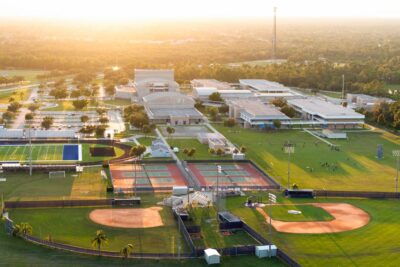Streamlining internal hiring processes and procedures through process improvement
March 2, 2022
Breanne Holloway
Assistant Director of Organizational Development and Learning, Ball State University
The views and opinions expressed are those of the author and do not necessarily represent the views or opinions of EAB.
No matter what industry we are talking about, from fast food to Fortune 500 companies, everyone is feeling the strain of the pandemic and the “Great Resignation”. Higher education has been vastly impacted by this surge of resignations and small applicant pools. It is more important than ever that we focus our attention to talent acquisition and onboarding to attract and retain top quality employees. In my role as Assistant Director of Organizational Development and Learning, it is imperative that I continue to engage with our employees from their first days on campus to their retirement.
Talent Acquisition is not just an HR function, it is a University-wide responsibility. At Ball State University, we realize that in order to provide the best customer focused application process, we have to refine and adjust our internal administrative efficiencies that make them nimbler and more effective. The Ball State HR department is currently in the final stages of formalizing our HR Talent Acquisition Strategic Plan. This strategic plan is just a small piece of a much bigger puzzle. This plan is a direct response to our University’s strategic plan, Destination 2040: Our Flight Path, that states: Our HR Policies, Procedures, and Business Processes enable us to recruit and retain outstanding people.
Focusing on a candidate centered approach to streamlining our internal hiring processes and procedures will allow us to:
- Hire more quickly and effectively even with depleted candidate pools.
- Retain our current employees who are looking for internal promotions by providing them with a quick and smooth process.
- Eliminate non-value-added steps that are burdening our staff resources that are currently strained.
My capstone project focused solely on the faculty request to fill vacancy process. However, we intend to extend the process improvement principals to our professional and staff request to fill. Using the Process Improvement Primer provided by EAB, my colleagues and I mapped the current state of our faculty request to fill vacancy process.
Within this map, using swim lanes, we found that the clear/smooth path was 111 steps. Within those 111 steps, we identified 17 potential errors or roadblocks and only 11 value added steps. This request to fill is sent through 10 different approvals, including a budget designee 4 times. My solution to this project, which is outlined more thoroughly in our HR Strategic Alignment Strategic Plan, is to create a more efficient process to reduce steps, time, redundancies, and errors in filling vacant positions. This solution will:
- Eliminate low to no value steps
- Streamline the approval process
- Establish position control protocols
- Proper training for hiring managers
- Implement a new Talent Management Software (TMS) system
- Establish post to hire goals
This is a cross divisional team effort to work on this solution. As I mentioned above, we are just beginning to scratch the surface of this work. EAB’s Realizing the Promise of Process of Improvement, has allowed us to establish steps to move our work forward in implementing our solution. We have currently assembled the right team to map the current state. Our next steps are to collect current-state data, design a future state, and develop our implementation plan. This project has helped me realize how rigid and redundant our current process is, and how it is taxing our internal campus colleagues.
Our applicant pools and employee retention is a struggle that we are all facing, and we should not allow our processes and procedures burden our University in obtaining the overall strategic objectives. By implementing these new processes and procedures we will meet our strategic goals and hire great employees that will enhance our mission to engage students in educational, research, and creative endeavors that empower our graduates to have fulfilling careers and meaningful lives enriched by lifelong learning and service, while we enhance the economic, environmental, and social vitality of our community, our state, and our world.
More Blogs

Beyond ROI: What the New Fed Data Misses About Higher Ed’s Value Crisis

Revitalize your athletics portfolio in a tumultuous landscape
